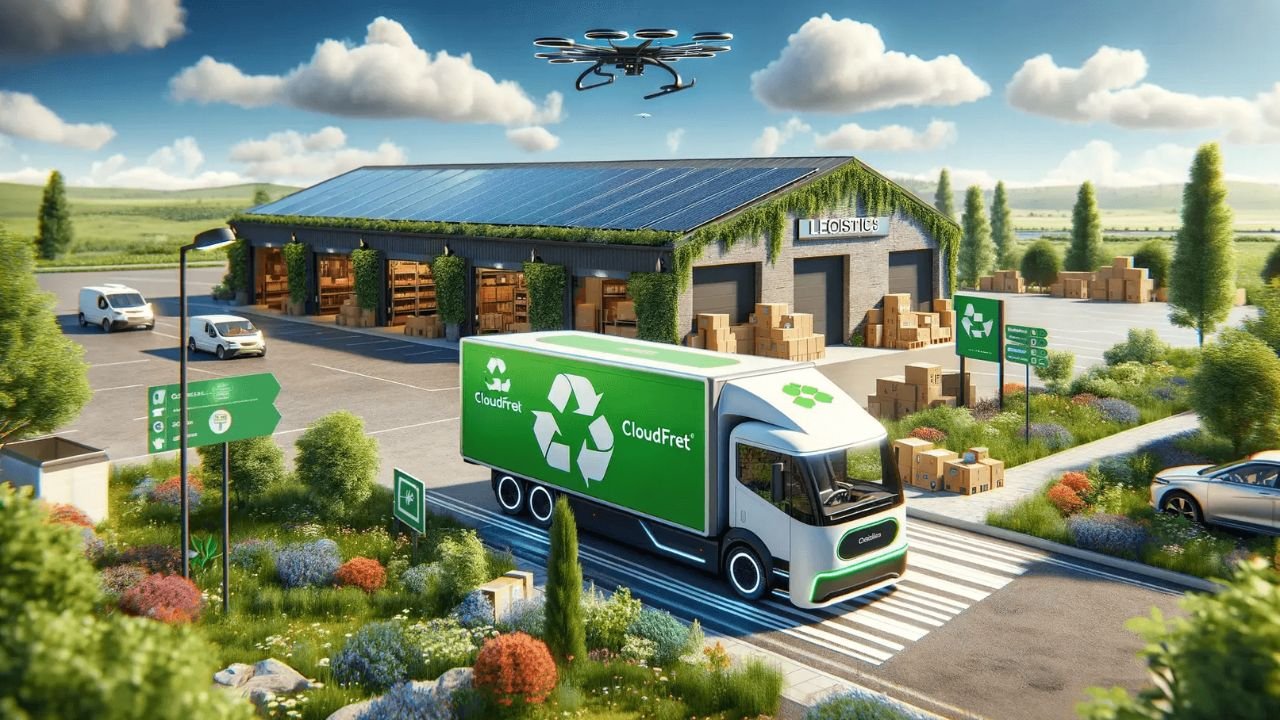As businesses grow and global trade expands, the logistics industry is under increasing pressure to deliver goods quickly and efficiently. However, this growth has also raised serious concerns about the environmental impact of transportation and supply chain operations. Green logistics has emerged as a solution, focusing on eco-friendly practices that not only reduce carbon emissions but also lower costs for businesses. By adopting sustainable methods, companies can balance profitability with responsibility, ensuring a better future for both commerce and the planet.
Why Green Logistics Matters Today
In recent years, sustainability has become a major priority for governments, businesses, and consumers. Rising fuel costs, climate change concerns, and strict environmental regulations have pushed logistics providers to rethink their operations. Customers are also becoming more eco-conscious and prefer to associate with brands that demonstrate environmental responsibility. Green logistics is no longer just a trend but a necessity for companies to remain competitive in 2025 and beyond.
Key Sustainable Practices in Logistics
Optimized Transportation Routes
Route optimization is one of the simplest yet most effective ways to cut emissions and save money. By using advanced route planning software, logistics companies can minimize fuel consumption, reduce travel time, and increase delivery efficiency. Avoiding unnecessary detours and idle time also helps reduce wear and tear on vehicles.
Adoption of Electric and Hybrid Vehicles
Shifting to electric and hybrid vehicles is a game-changer for reducing carbon footprints. Electric vehicles are cost-effective in the long run as they reduce dependency on fossil fuels and lower maintenance expenses. Many logistics providers in India and around the world are expanding their EV fleets to ensure cleaner and quieter urban deliveries.
Eco-Friendly Packaging Solutions
Traditional plastic-based packaging contributes heavily to waste and pollution. Green logistics promotes the use of biodegradable, recyclable, and reusable packaging materials. Companies are now exploring lightweight packaging that reduces shipment weight, thereby lowering fuel consumption during transportation.
Energy-Efficient Warehousing
Warehouses consume a significant amount of energy for lighting, cooling, and operations. By switching to renewable energy sources such as solar power and installing energy-efficient equipment, companies can significantly cut electricity costs. Smart sensors and IoT devices are also being used to optimize energy usage and reduce wastage.
Load Consolidation and Freight Sharing
Empty or half-filled trucks are a common problem in logistics, leading to higher fuel usage and unnecessary emissions. Load consolidation ensures that vehicles carry maximum capacity, reducing the number of trips required. Freight sharing between companies is also emerging as a practical solution, especially for smaller shipments.
Reverse Logistics and Recycling
Green logistics also involves managing returns in an eco-friendly way. Reverse logistics focuses on collecting used products, packaging, or defective goods and recycling them whenever possible. This practice reduces waste and provides opportunities for companies to recover value from returned items.
The Cost Benefits of Going Green
While many businesses assume that adopting green practices is expensive, the reality is quite the opposite. Optimized routes, energy savings, and fuel-efficient vehicles lower operational costs in the long term. Sustainable packaging reduces material costs, and recycling initiatives can create new revenue streams. Furthermore, companies that adopt green logistics often enjoy stronger customer loyalty and improved brand reputation, which translates into higher sales and growth.
Role of Technology in Sustainable Logistics
Technology is at the heart of green logistics. Artificial intelligence, IoT sensors, and data analytics allow companies to track fuel usage, monitor emissions, and identify areas of improvement. Automated systems help streamline warehouse operations, while smart tracking devices provide visibility across the supply chain. As technology continues to evolve, businesses can expect even greater efficiency and sustainability in logistics operations.
Government Policies and Support
Governments worldwide, including India, are introducing policies and incentives to promote sustainable logistics. Subsidies for electric vehicles, stricter emission norms, and tax benefits for companies adopting green practices are encouraging the industry to transition. These measures not only help businesses reduce their carbon footprint but also align with national and global climate goals.
The Future of Green Logistics
By 2030, green logistics is expected to become the industry standard. Autonomous electric trucks, drone deliveries, and fully renewable-powered warehouses are on the horizon. Companies that start investing in sustainable practices today will not only stay ahead of regulations but also position themselves as leaders in innovation and responsibility. As consumer expectations shift further toward eco-friendly brands, green logistics will be a crucial factor in business success.
Conclusion
Green logistics is more than just a corporate responsibility; it is a smart business strategy. By optimizing transportation, adopting cleaner vehicles, using eco-friendly packaging, and leveraging technology, companies can significantly reduce costs while cutting down carbon emissions. The shift toward sustainable logistics creates a win-win situation where businesses improve efficiency, customers receive responsible services, and the environment benefits from reduced pollution. In 2025 and beyond, companies that embrace green logistics will define the future of supply chains and set new benchmarks for sustainable growth.
